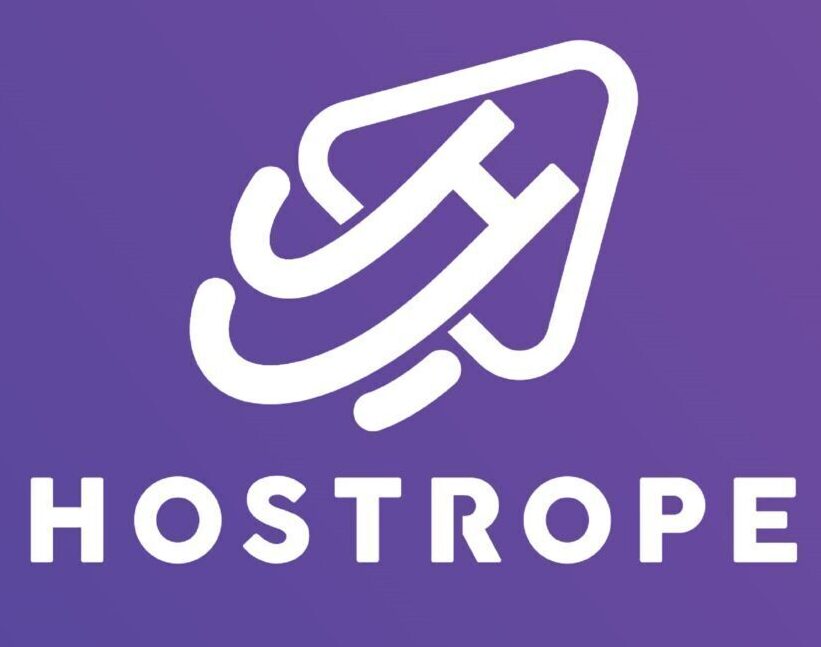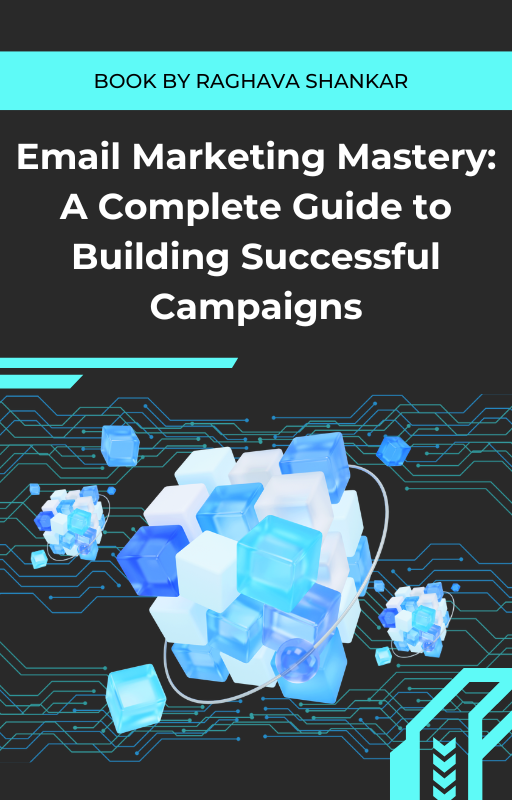In today’s competitive digital landscape, landing pages have become vital for any marketing strategy. They serve as the first point of contact between your business and potential customers, making it crucial to design them effectively. GetResponse, a robust marketing platform, offers an intuitive landing page builder that allows users to create stunning pages that convert. In this extensive guide, we’ll delve deep into how to create landing pages in GetResponse, optimize them for conversions, and integrate them seamlessly with your email marketing strategies.
Table of Contents
- Understanding Landing Pages
- 1.1 What is a Landing Page?
- 1.2 Types of Landing Pages
- Setting Up Your GetResponse Account
- 2.1 Creating an Account
- 2.2 Navigating the Dashboard
- Creating Your Landing Page
- 3.1 Accessing the Landing Page Builder
- 3.2 Choosing a Template
- 3.3 Customizing Your Landing Page
- 3.4 Mobile Optimization
- Optimizing Your Landing Page for Conversions
- 4.1 Crafting Compelling Copy
- 4.2 A/B Testing
- 4.3 Adding Social Proof
- 4.4 Ensuring Fast Loading Times
- Integrating Your Landing Page with Email Lists
- 5.1 Connecting to Email Lists
- 5.2 Setting Up Autoresponders
- 5.3 Tracking and Analyzing Performance
- Publishing and Promoting Your Landing Page
- 6.1 Final Review Before Publishing
- 6.2 Promoting Your Landing Page
- Case Studies and Success Stories
- 7.1 Case Study 1: Lead Generation Success
- 7.2 Case Study 2: Boosting Sales with Targeted Landing Pages
- Common Mistakes to Avoid
- Conclusion
1. Understanding Landing Pages
1.1 What is a Landing Page?
A landing page is a standalone web page specifically designed for a marketing or advertising campaign. Unlike a website homepage that serves multiple purposes, a landing page has a singular focus, usually with a call to action (CTA) aimed at converting visitors into leads or customers. Whether it’s collecting email addresses, promoting a product, or encouraging users to sign up for a webinar, the goal is to guide visitors toward a specific action.
1.2 Types of Landing Pages
There are several types of landing pages, each serving different purposes:
- Lead Generation Landing Pages: These pages collect user information through forms, typically offering something of value in return, like an eBook, webinar, or free trial.
- Click-Through Landing Pages: These pages are designed to lead visitors to another page, often used in eCommerce to encourage users to purchase a product.
- Sales Pages: These are focused on selling a specific product or service and typically include detailed information, testimonials, and strong CTAs.
- Event Registration Pages: Used for events like webinars or workshops, these pages capture registrations and provide essential details about the event.
Understanding these types will help you determine which type of landing page best suits your marketing goals.
2. Setting Up Your GetResponse Account
2.1 Creating an Account
To start using GetResponse, you first need to create an account. Here’s how to do it:
- Visit GetResponse: Go to the GetResponse website.
- Sign Up: Click on the “Sign Up” button. You can choose a free trial or one of their paid plans.
- Enter Your Details: Fill out the required information, including your name, email address, and password.
- Confirm Your Email: Check your email for a confirmation link and follow the instructions to activate your account.
2.2 Navigating the Dashboard
Once your account is set up, you’ll be taken to the GetResponse dashboard. Familiarizing yourself with the interface is essential:
- Main Menu: The main menu on the left side includes options for creating campaigns, managing contacts, and accessing analytics.
- Widgets: Use the widgets on the dashboard to track your most important metrics, such as open rates, click-through rates, and conversion statistics.
- Support Resources: Explore the help center and resources for tutorials, tips, and FAQs to assist you as you navigate the platform.
3. Creating Your Landing Page
3.1 Accessing the Landing Page Builder
Creating a landing page in GetResponse is simple:
- Click on “Landing Pages”: In the left sidebar, find and click on the “Landing Pages” option.
- Start a New Page: Click on the “Create Landing Page” button to begin the process.
3.2 Choosing a Template
GetResponse offers a wide selection of professionally designed templates. Here’s how to choose one:
- Browse Templates: The template library categorizes options based on the type of landing page you want to create (e.g., lead generation, webinar, sales).
- Select a Template: Click on a template to preview it. If it suits your needs, click “Use this template” to start customizing.
3.3 Customizing Your Landing Page
Customization is key to making your landing page stand out. Here’s how to do it effectively:
- Editing Elements: Click on any text box, image, or element to edit its content. Change text, fonts, and sizes to match your brand identity.
- Adding New Elements: Use the drag-and-drop feature to add new elements such as buttons, images, and videos. Simply drag the element from the left sidebar to your desired location on the page.
- Form Configuration: If your page collects leads, ensure your form fields capture the necessary information. Common fields include:
- Name
- Email Address
- Phone Number (if applicable)
- Custom fields (e.g., company name, job title)
- Styling Your Page: Use the style settings to adjust colors, borders, and backgrounds. Maintain consistency with your brand colors for a professional look.
- Setting Up CTAs: Ensure your call-to-action buttons are clear and compelling. Phrases like “Get Your Free eBook” or “Sign Up for Our Newsletter” should be bold and noticeable.
- Using Images and Videos: Visual content can significantly enhance your landing page. Use high-quality images that reflect your brand and product. Videos can also be effective; consider adding a brief explainer video or a customer testimonial.
3.4 Mobile Optimization
With a significant portion of web traffic coming from mobile devices, it’s crucial to optimize your landing page for mobile:
- Preview Mobile Version: Use the mobile preview feature to see how your page appears on smartphones.
- Adjust Elements: If elements appear too small or misaligned, make adjustments specifically for the mobile view.
- Test Functionality: Ensure that forms, buttons, and links are easily clickable and functional on mobile devices.
4. Optimizing Your Landing Page for Conversions
Creating a landing page is just the beginning; optimizing it for conversions is crucial for achieving your marketing goals.
4.1 Crafting Compelling Copy
The copy on your landing page should capture attention and persuade visitors to take action. Here are some tips for effective copywriting:
- Clear Value Proposition: Clearly articulate what the visitor will gain by filling out your form or making a purchase. Use simple language that conveys the benefits succinctly.
- Use Action-Oriented Language: Employ strong action verbs in your CTAs. Phrases like “Get Started,” “Download Now,” and “Claim Your Discount” create urgency.
- Keep It Concise: Use short paragraphs and bullet points to make the content easy to scan. Avoid long blocks of text, which can overwhelm readers.
- Address Pain Points: Identify and address the pain points of your target audience. Show how your offer provides a solution to their problems.
- Create Urgency: If applicable, use time-sensitive language to encourage immediate action. Phrases like “Limited Time Offer” or “Only 10 Spots Left” can motivate visitors to act quickly.
4.2 A/B Testing
To maximize conversions, consider implementing A/B testing:
- Create Variations: Develop different versions of your landing page. Test one variable at a time, such as headlines, images, or CTAs.
- Analyze Performance: Use GetResponse’s analytics tools to track which version performs better. Monitor metrics like conversion rates, bounce rates, and time spent on the page.
- Iterate and Optimize: Based on your findings, make adjustments and continue testing to improve performance continuously.
4.3 Adding Social Proof
Social proof can significantly influence visitor decisions. Here are ways to incorporate it:
- Testimonials: Include quotes from satisfied customers or clients. Use real names and photos (with permission) to enhance authenticity.
- Case Studies: Showcase successful outcomes from previous clients. Include detailed information about their challenges and how your product/service helped them.
- User-Generated Content: Encourage users to share their experiences on social media and feature those posts on your landing page.
- Trust Badges: Display any certifications, awards, or security badges to build trust and credibility. This is particularly important for eCommerce landing pages.
4.4 Ensuring Fast Loading Times
Page load speed is critical for user experience and conversions. Here’s how to ensure your landing page loads quickly:
- Optimize Images: Use compressed images that maintain quality but reduce file size. Tools like TinyPNG or ImageOptim can help.
- Minimize HTTP Requests: Limit the number of elements on your page to reduce HTTP requests, which can slow loading times.
- Use a Fast Hosting Provider: Ensure that your hosting provider can handle high traffic and offers reliable performance.
- Regularly Test Speed: Use tools like Google PageSpeed Insights or GTmetrix to regularly test your page speed and identify areas for improvement.
5. Integrating Your Landing Page with Email Lists
Integrating your landing page with your email list is essential for effective lead management and follow-up.
5.1 Connecting to Email Lists
- Select Email List: In the form settings, choose the email list where new subscribers will be added.
- Enable Double Opt-In: Consider enabling double opt-in, which requires subscribers to confirm their email addresses. This adds an extra layer of security and ensures you have genuine leads.
5.2 Setting Up Autoresponders
- Create a Welcome Email: Navigate to the “Autoresponders” section in GetResponse. Set up an automated welcome email to be sent immediately after someone subscribes through your landing page.
- Personalize the Message: Use the subscriber’s name and reference the offer they signed up for to create a personalized experience.
- Provide Additional Value: Include links to additional resources or related content that may interest your new subscribers.
- Nurture Your Leads: Develop a series of follow-up emails to engage your subscribers over time. Plan your content to provide value and guide them further along the customer journey.
5.3 Tracking and Analyzing Performance
- Integrate Google Analytics: Set up Google Analytics tracking to monitor your landing page’s performance. This will provide insights into traffic sources, user behavior, and conversion rates.
- Use GetResponse Analytics: Leverage GetResponse’s analytics tools to track form submissions, conversion rates, and overall campaign performance. Look for trends and patterns that can inform future campaigns.
6. Publishing and Promoting Your Landing Page
6.1 Final Review Before Publishing
Before going live, conduct a final review of your landing page:
- Proofread Content: Check for spelling and grammar errors. Ensure that all links and buttons function correctly.
- Test on Multiple Devices: View your landing page on various devices (desktop, tablet, smartphone) to ensure it looks and functions well across all platforms.
- Check Load Speed: Use speed testing tools to confirm that your landing page loads quickly.
6.2 Promoting Your Landing Page
Once your landing page is published, it’s time to drive traffic to it:
- Social Media Marketing: Share your landing page on your social media platforms. Create engaging posts that encourage your followers to visit your page.
- Email Marketing Campaigns: Include the landing page link in your email newsletters and campaigns. Make sure to highlight the benefits of visiting the page.
- Content Marketing: Write blog posts or articles that relate to the offer on your landing page. Include links to your landing page within the content.
- Paid Advertising: Consider using Google Ads or Facebook Ads to promote your landing page to a targeted audience. Tailor your ads to resonate with potential customers based on their demographics and interests.
- Partnerships and Collaborations: Collaborate with influencers or other businesses in your niche to promote your landing page. Guest blogging or joint webinars can also help drive traffic.
7. Case Studies and Success Stories
Understanding real-world applications can inspire your landing page creation efforts. Here are two illustrative case studies:
7.1 Case Study 1: Lead Generation Success
Business: A software company specializing in project management tools.
Challenge: The company wanted to increase its email list for future marketing campaigns.
Solution:
- Landing Page: Created a lead generation landing page offering a free trial of their software in exchange for email addresses.
- Copy: The page featured strong testimonials from existing customers, a clear value proposition, and a simple sign-up form.
- Promotion: Utilized targeted Facebook ads to reach project managers and small business owners.
Results:
- Increased email list by 200% in three months.
- 25% of leads converted to paying customers during the trial period.
7.2 Case Study 2: Boosting Sales with Targeted Landing Pages
Business: An eCommerce store selling eco-friendly products.
Challenge: The store aimed to promote a new product line while increasing conversions.
Solution:
- Landing Page: Developed a click-through landing page focused on a new eco-friendly cleaning product, highlighting its benefits and eco-conscious ingredients.
- A/B Testing: Tested two versions of the page—one with a video demonstration and one with customer testimonials.
- Social Proof: Included customer reviews and ratings prominently.
Results:
- The landing page with the video outperformed the testimonial page by 40% in conversions.
- Overall sales for the product line increased by 35% during the campaign.
8. Common Mistakes to Avoid
While creating landing pages in GetResponse is relatively straightforward, there are common pitfalls to watch out for:
8.1 Overloading with Information
Too much information can overwhelm visitors. Keep your content concise and focused on the primary goal.
8.2 Ignoring Mobile Optimization
With a significant number of users accessing the web via mobile devices, neglecting mobile optimization can lead to lost conversions.
8.3 Weak CTAs
Vague or weak CTAs can fail to compel visitors to take action. Ensure your CTAs are clear, strong, and action-oriented.
8.4 Failing to Test
Not conducting A/B tests means missing out on valuable insights that can improve performance. Regularly test different elements to optimize your landing page.
8.5 Neglecting Analytics
Failing to analyze the performance of your landing page can lead to missed opportunities for improvement. Use analytics to inform your strategies continually.
9. Conclusion
Creating high-converting landing pages in GetResponse is an essential skill for any digital marketer. By understanding the fundamentals of landing pages, leveraging GetResponse’s user-friendly tools, and implementing best practices for optimization, you can significantly enhance your marketing efforts.
From crafting compelling copy and incorporating social proof to integrating with email lists and promoting your pages effectively, each step plays a crucial role in driving conversions. Remember, continuous testing and refinement are key to achieving long-term success.
Now that you’re equipped with this comprehensive guide, it’s time to start building your landing pages in GetResponse and watch your conversions soar!









Pretty section of content. I just stumbled upon your site and in accession capital to assert that I acquire in fact enjoyed account your blog posts. Any way I’ll be subscribing to your augment and even I achievement you access consistently quickly.